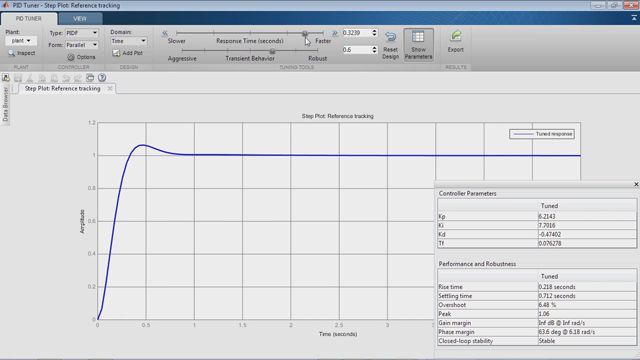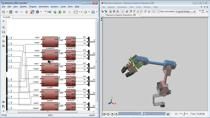PID Control Design with Control System Toolbox
Design PID controllers using Control System Toolbox™.
Published: 3 Jan 2012
Control System Toolbox lets you easily tune PID controller gains. If you have a plant model, you can launch a PID tuner app for this plant model. When it opens up, it automatically tunes PID gains for you to achieve the right balance of performance and robustness. You can quickly try different controller types such as proportional only, proportional integral, and PID.
You can inspect the tuned PID gains as well as performance and robustness characteristics such as race time, settling time, overshoot, gain margin, and face margin. You can use interactive sliders to adjust system performance. You can adjust the response time with the first slider and the face margin with the second one. In addition to the setup response plot, you can also look at the body plot of your system.
You can also look at different responses. By default, PID tuner app shows use reference striking response. But you can choose to look at other responses such as controller effort and input and output disturbance rejection. You can look at several plots simultaneously. Using these responses, you can adjust controller performance for optimal set point tracking or disturbance rejection results.
Once you are satisfied with the design, you can export the PID controller into MATLAB, where it will be represented as a PID object. In addition to the PID tuner app, Control System Toolbox also provides a function that is the same functionality for tuning PID gains. This function is called PID tune.
You can call this function with a plant model as an input argument to design the default PID controller, or you can also specify desired gain crossover frequency. The output of the function is a tuned PID controller represented by PID object. Once you have a PID object in MATLAB workspace, you can easily access and, if needed, modify individual gains.
You can use PID object like any other LTI model. For example, you can compute closed loop transfer function and plot its step response. This concludes the video.




